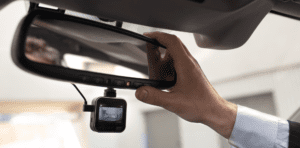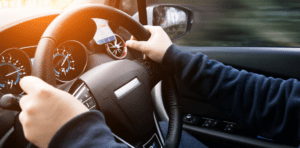Compare cheap car insurance
✔ Compare cheap car insurance quotes
✔ Over 110 insurance providers
✔ Get a quote in minutes
✔ Save up to £504*
If your car isn’t sheltered in a garage, you’ve likely encountered frosty windscreens on chilly mornings. Here’s a quick guide to efficient de-icing, ensuring a clear start to your drive.
- How do I de-ice a car?
- The don’ts of car de-icing
- Planning ahead for winter mornings
- Frequently asked questions
How do I De-Ice a Car?
De-icing your car on a cold, frosty morning is not just a matter of convenience; it’s essential for safety and legal compliance. In this comprehensive guide, we’ll explore the best practices to ensure your car is ready for the road during winter.
Preparing for Frosty Mornings
1. Plan Ahead
- Weather Forecast: Check the weather report the evening before. Anticipating frosty conditions allows you to prepare for de-icing your car.
2. Time Management
- Allocate Sufficient Time: De-icing can take up to 10 minutes. Plan to leave earlier to avoid rushing this important task.
The De-icing Process
3. Windshield Wipers and Engine Start
- Inspect Wiper Blades: Ensure they’re not frozen to the windshield. Lift them off the windshield overnight to prevent sticking.
- Start the Engine: Turn on the heater directed at the windshield and activate the rear windshield heater. Keep the engine running during this process.
- Safety Note: Never leave your car unattended with the engine running. This poses a risk of theft.
- Tech Tip for New Cars: Some modern vehicles, especially electric ones, might allow remote heating activation via a smartphone app.
4. Snow Removal
- Use a Soft Brush: Remove all snow from your car, especially the roof, to prevent it from obstructing your view while driving.
- Clear Vital Areas: Ensure the front grille, lights, indicators, and number plate are snow-free.
5. Ice Scraping
- Use Quality Tools: A good scraper and de-icer spray are recommended. Avoid using makeshift tools like credit cards to prevent damage.
- Include All Surfaces: Don’t forget to de-ice wing mirrors and other glass surfaces.
Ensuring Clear Visibility
6. Window Defogging
- Avoid Smudges: Resist the temptation to use your hand for wiping foggy windows.
- Utilize Air Conditioning: Using A/C along with the heater helps to de-fog by releasing warm, dry air.
- Turn Off Air Recirculation: Introducing fresh air into the car helps in reducing moisture and speeding up the defogging process.
- DIY Moisture Absorber: Some suggest using a sock filled with non-clumping silica cat litter as a DIY moisture absorber inside the car.
Additional Tips for Winter Car Care
- Regular Checks: Regularly inspect your car for any issues exacerbated by cold weather, such as battery performance and tire pressure.
- Emergency Kit: Always have a winter emergency kit in your car. This should include items like a blanket, flashlight, and some basic tools.
- Antifreeze Levels: Ensure your car’s antifreeze level is sufficient to avoid freezing of the engine’s cooling system.
- Safe Driving Practices: Adapt your driving to winter conditions. This includes gentle braking and increased following distances.
Legal Considerations and Compliance
- Visibility Law: Ensure all windows and mirrors are clear as per traffic regulations.
- Insurance Implications: Failure to properly de-ice and clean your car can lead to legal consequences and impact your insurance in the event of an accident.
Key Takeaway
De-icing your car is a crucial aspect of winter driving. It ensures your safety and compliance with traffic laws.
By planning ahead, using the right tools and methods, and being aware of the legal implications, you can navigate the winter roads with confidence and safety.
How much can you save on your car insurance?
The don’ts of car de-icing
Defrosting your car is essential during chilly mornings, but there are some actions that can either damage your vehicle or pose safety hazards. Here’s what you should steer clear of when de-icing your car:
Steer Clear of Water, Especially Hot!
It’s a well-known fact that pouring boiling water onto a frozen windscreen can cause it to crack due to the abrupt temperature variation. However, a lesser-known fact is that even cold or lukewarm water isn’t ideal for de-icing.
Why? Glass can expand and contract with temperature fluctuations. Introducing water can lead to rapid cooling, causing the glass to flex, and potentially leading to cracks. This risk is magnified if your windscreen has previously undergone any repair.
Don’t Opt for a Peephole Approach
It’s not enough to scrape off a tiny area on your windscreen to see through. Proper visibility is paramount for safe driving. Thus, ensure you clear all windows of frost, snow, and ice. Your view should never be obstructed by lingering frost or hastily cleared sections.
Don’t Overlook the Car Exterior


Image used under the Open Government Licence v3.0
While windows are crucial for visibility, don’t forget about the rest of your car. The Highway Code’s Rule 229 mandates that drivers remove any snow that could potentially dislodge while driving and pose a hazard to other motorists. This means removing snow from your roof, bonnet, and any other areas.
Don’t Be Careless with Your Vehicle’s Security
Never leave your vehicle unattended with the engine on and the keys inside, even if it’s just for a quick return indoors. Apart from the risk of theft, you could also incur fines in some jurisdictions for leaving your engine idling without reason on a public roadway.
Avoid Makeshift Scrapers
While it might seem tempting to use a credit card or other flat objects as a makeshift scraper, doing so might damage the glass or paintwork of your car. Always opt for tools designed specifically for the purpose.
Don’t Neglect the Side Mirrors


While focusing on the main windows, side mirrors are often overlooked. It’s essential to ensure they are free from ice and snow, as they play a pivotal role in maintaining a clear field of vision, especially when changing lanes or parking.
By keeping these points in mind, you ensure the safety of your vehicle, yourself, and others on the road. Proper de-icing techniques are an investment in safe winter driving.
How much can you save on your car insurance?
Planning ahead for winter mornings
Arm yourself with these handy tips to minimise your defrosting routine, ensuring you stay cosy a tad longer before facing the winter chill.
Shield your windscreen from ice
Use a protective layer like a blanket or a specialised windscreen cover to thwart ice accumulation on your windscreen overnight. Installing the cover in the evening, especially when the car still retains some warmth from the day’s use, is ideal.
The next morning, it’s as simple as removing the cover and brushing off any minor ice patches underneath.
Tackle window fog with shaving foam
A little-known tip shared by the RAC suggests that shaving foam can be your best ally against foggy windows. For optimal results, spread a thin layer of foam on the inner surface of your windscreen and other windows with the aid of a gentle sponge or cloth.
Wipe it clean afterwards. Repeated application not only promises a fog-resistant shield but also bestows your windscreen with a gleaming finish.
Strategise your parking towards the sunrise
Leveraging the natural warmth of the sun can be a game-changer. Since the sun emerges from the east, angling your car so that the windscreen faces the sunrise can provide additional warmth. This tactic might decrease the chances of significant ice formation.
Ensure your car locks remain ice-free
Encountering frozen car locks can be daunting, especially for vehicles still dependent on a manual key. One useful hack is to cover the lock with a magnet (even a fridge magnet might do the trick) overnight, preventing the cold from settling in.
When you’re ready to leave, simply take off the magnet and stash it in your car for its next use.


Spraying a little WD-40 on the lock can also stave off ice and ensure smooth operation. Remember to check the lock for your trunk if that’s a part of your morning routine.
While de-icer sprays can be effective, always peruse the label to ensure it’s safe for use on locks. Some formulations might corrode or damage metals.
An essential word of caution: Never exert excessive force if the lock seems stuck. This could snap the key, leading to more complications and potential costs.
If, despite your best efforts, you find yourself locked out, your breakdown cover might be a lifesaver.
Breakdown cover providers
Find the UK's leading breakdown cover providers below.
Frequently asked questions
- Turn on the heater: Start the engine and set the heater to defroster mode, maximising its capacity to absorb internal moisture since warm air holds more moisture.
- Press the A/C button: This activates a car feature that utilizes the A/C coils to dry the air inside more efficiently.
- Turn air recirculation off: Disable air recirculation. Cold winter air, being dry, helps absorb the dampness inside when it circulates in your vehicle.
- Open the windows slightly: This promotes a quicker exchange of humid internal air with the dry external air.
- Defrost your windows externally: Avoid hot water. Instead, prepare a mix of 2/3 cup Isopropyl or rubbing alcohol and 1/3 cup water in a spray bottle. This solution, which doesn’t freeze due to the low freezing point of alcohol, aids in melting windshield ice and can be conveniently stored in your car.
Use hot and dry air, as it absorbs more water than cold, moist air. For efficient defrosting, activate the heat, use air conditioning, disable air recirculation, and slightly open the windows to maintain dryness.
When faced with a snow-covered car, initiate the heater or defroster immediately in the morning. Let it run for approximately 15 minutes to begin the defrosting process.
Subsequently, you can swiftly scrape any remaining snow from the windscreen.












